Search
All search results for "audi a2"
(73)
 Leading light: 25 years Audi A2
Leading light: 25 years Audi A2
Premium in the entry-level segment: the Audi A2 – progressive in design and technology, and with top long-term quality The Audi A2 1.2 TDI was the world’s first four-door three-liter car
It was launched 25 years ago – and polarized opinions: the Audi A2. With its innovative aluminum body, the compact car was light, aerodynamic, and economical in terms of consumption. There were five engine variants to choose from; the A2 1.2 TDI caused a sensation as the world’s first four-door three-liter car. And since 2003, the special “colour.storm” edition has attracted attention with its special paint colors. However, since sales fell short of expectations, Audi ended production in 2005 after about five years and 176,377 units built. The innovative Audi A2 can showcase its qualities in a “second career”: as a modern classic with a stable value, the A2 has a loyal fan base and can still be seen on the road today as a daily companion.
In the early 1990s, the three-liter car was announced as a development goal by the Volkswagen Group and Audi, and the first work on the project began shortly afterwards. The designers in Ingolstadt worked closely with the experts at the aluminum center in Neckarsulm. In May 1995, they presented a concept study called “Ringo,” whose Audi Space Frame (ASF) was less complex than the ASF of the Audi A8, which was largely built by hand. Stefan Sielaff – the former head of Audi’s Munich design studio – took over the project and led the interior design, while Belgian designer Luc Donckerwolke handled the exterior. Together with future design chief Gerhard Pfefferle, they gave the “rolling cage” Ringo a two-door body – which proved already close to the later design. As development progressed, two studies were created: one was a show car at the IAA in Frankfurt in 1997 and, in addition to the provisional model designation Al2, it bore the nickname “Light Green” because of its color.
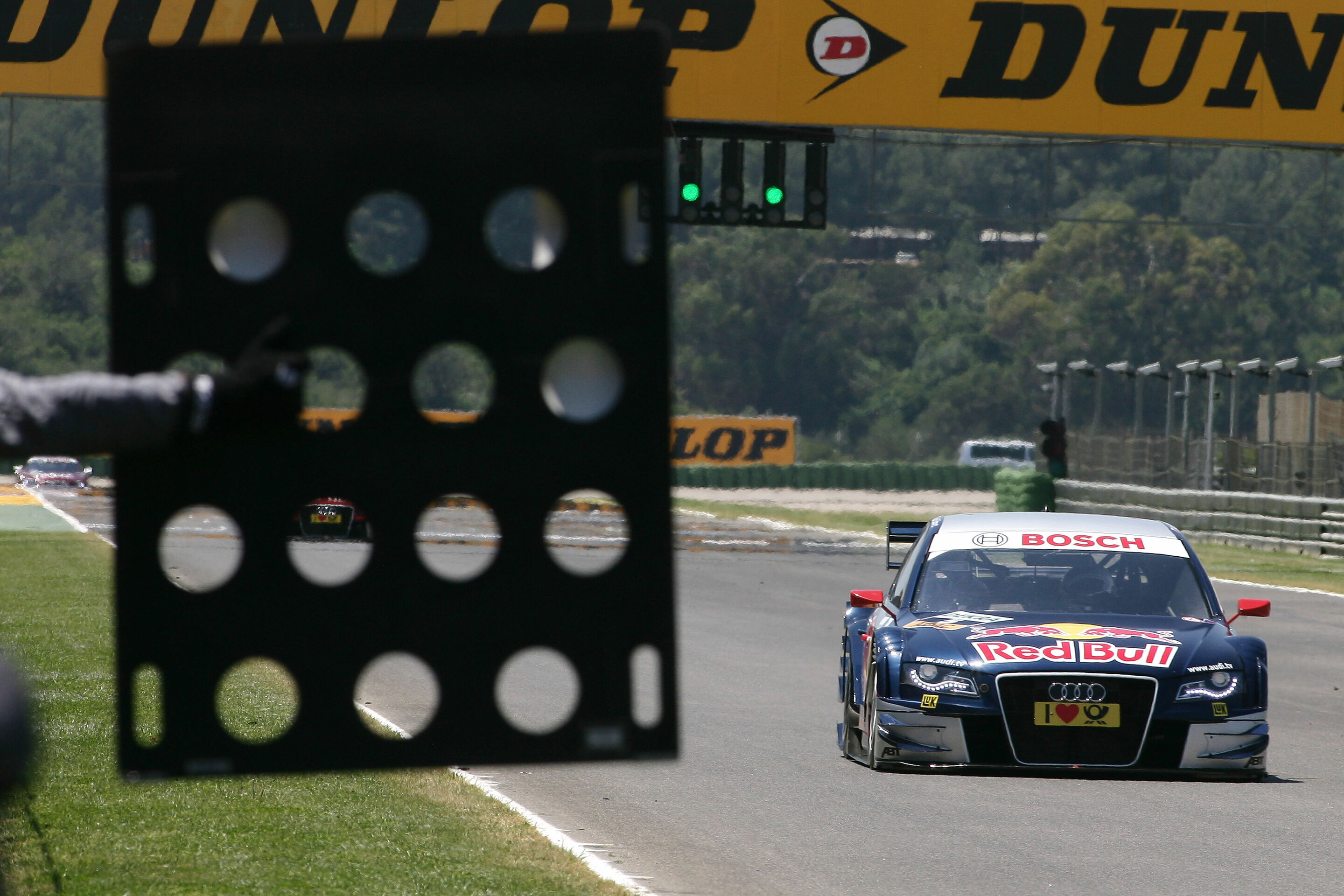 Audi aims to score a 2-1 at Lausitz
Audi aims to score a 2-1 at Lausitz
Facts and quotes by the Audi drivers Mattias Ekström (31/S), Red Bull Audi A4 DTM #5 (Audi Sport Team Abt Sportsline) • Was on the pole position at the EuroSpeedway last year • Tested a NASCAR race car between two DTM rounds “It’s always nice to race at the EuroSpeedway because I’ve got plenty of fond memories of this track. We’ve got to do a perfect job of preparing ourselves because, historically, Mercedes has always been strong there. Basically, we can expect similar conditions as at Valencia: the tarmac doesn’t have a lot of grip and the track is generally slippery. As far as that goes, we can benefit from our experiences in Spain.” Oliver Jarvis (26/GB), Tabac Original Audi A4 DTM #2 (Audi Sport Team Abt) • After Valencia, tested in an Audi R10 TDI of the Kolles team to prepare for the Le Mans 24 Hours • Was headed for a podium at Valencia before retiring on the 38th of 45 laps “After the first two weekends I can barely wait to get back into the cockpit in order to finish a race and score points. Mercedes was strong at Lausitz in recent years. But this year everything’s different. We made a big step forward with the car and with understanding the tires.” Katherine Legge (29/GB), Glamour Audi A4 DTM #15 (Audi Sport Team Rosberg) • Had to skip the race at Valencia due to an infection • Started the race from the fifth row at Lausitz last year “I would really have loved to race at Valencia but accept that it was the best solution not to risk my health. I’m hoping to be fit again and to be able to get back into the cockpit of my Audi A4 DTM at Lausitz where I qualified for position nine on the grid last year. This had been my best result up to that point in time. It would be nice to continue that.” Miguel Molina (21/E), Audi Bank A4 DTM #18 (Audi Sport Rookie Team Abt) • Was greeted by his fan club from Lloret de Mar at his home round • Has remained the only one of the three 2010 DTM rookies to have scored points “First, I’ll have to get used to a new track.
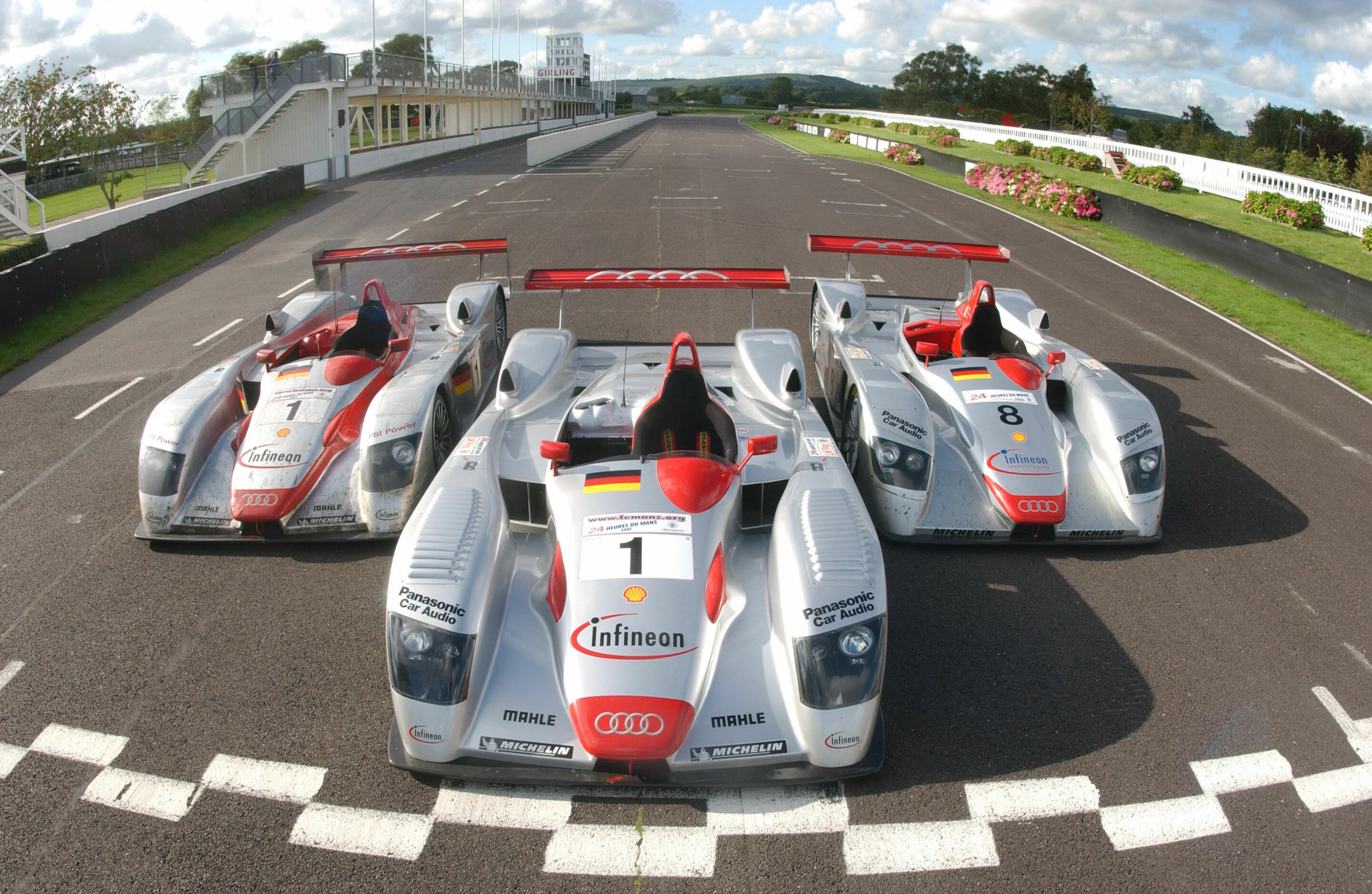 Awards for Audi FSI technology and Tom Kristensen
Awards for Audi FSI technology and Tom Kristensen
Audi has won the "Technology Award" from Britain´s Autocar specialist magazine for its FSI technology pioneered at Le Mans. The FSI technology was developed by Audi and used during the Le Mans victories in 2001 and 2002 and is now available on the A2 1.6 FSI and A4 2.0 FSI roadcars.
A further award has been given to Audi works driver Tom Kristensen: England´s Motorsport News voted the winner of the American Le Mans Series 2002 (ALMS) "Sportscar driver of the year 2002".
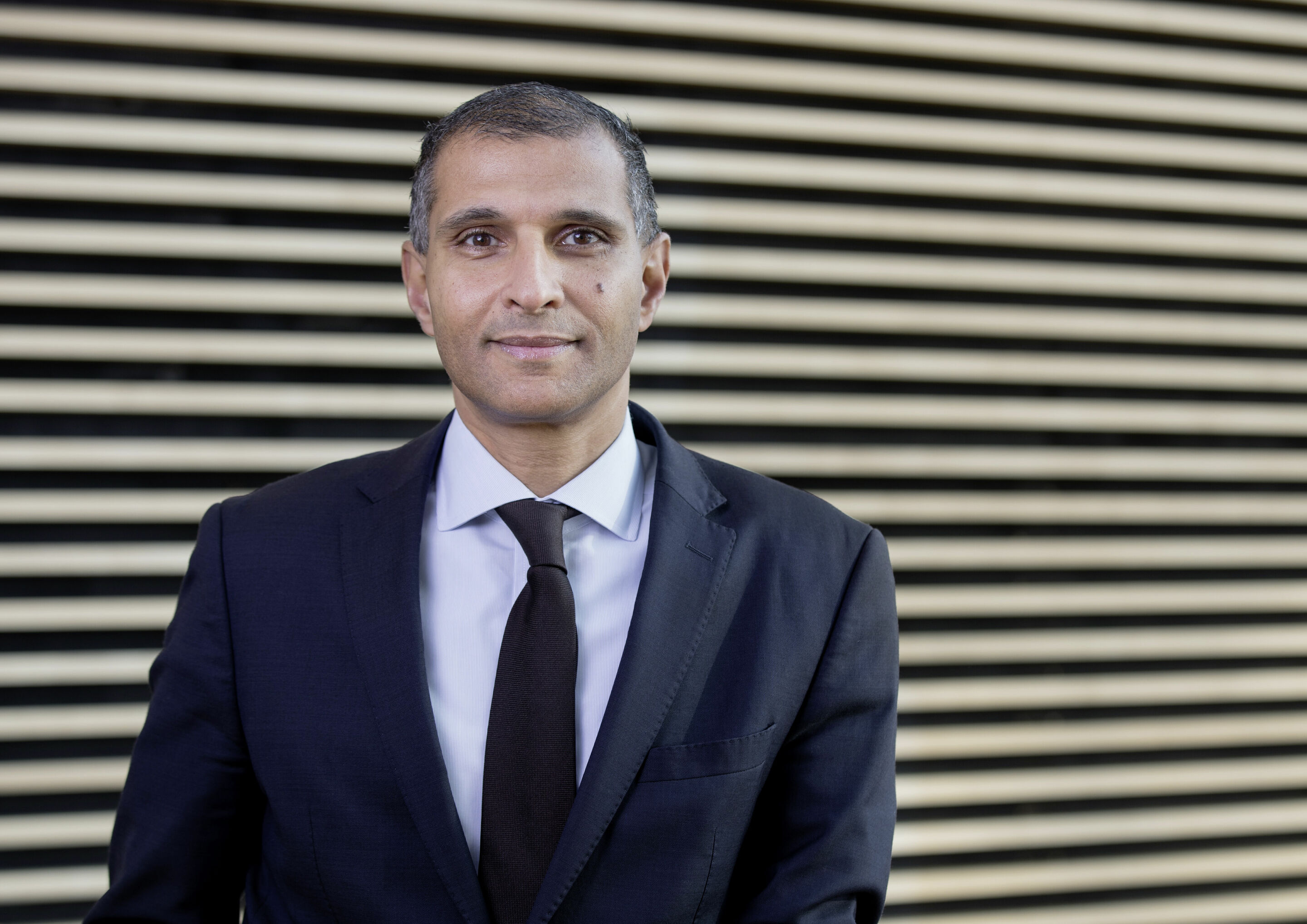 Dr. Tarek Mashhour - Biography
Dr. Tarek Mashhour - Biography
Executive President of Audi México
Tarek Mashhour was born in 1965 in Münster (North Rhine‑Westphalia). After leaving school, he studied mechanical engineering at RWTH Aachen University. He then gained a doctorate at the Technical University of Hamburg in the field of artificial intelligence. In 1996, he joined Audi as a planner in the Toolmaking division. He then held various management positions within Audi Toolmaking at the Ingolstadt and Neckarsulm sites, in charge of projects for example for the Audi A2, for design technology and for the machine park. Subsequently, Tarek Mashhour was responsible for toolmaking at VW do Brasil. After returning to Audi, he moved to the Procurement division, where he was in charge of purchased‑parts management. In 2009, he was appointed Head of Planning for the Audi’s Neckarsulm, China and Lamborghini plants. After that, he was responsible for production planning at the plants in Brussels (Belgium) and Győr (Hungary), as well as for the planning and implementation of the new Audi plant in San José Chiapa (Mexico). From September 2016, Tarek Mashhour was responsible for the production strategy of AUDI AG, including the key area of digitization. Starting in October 2018, he was the head of series production for electric models at Audi. Since November 1, 2020, Dr. Tarek Mashhour has been Executive President of Audi México.
 Audi Tradition to commemorate numerous anniversaries in 2025
Audi Tradition to commemorate numerous anniversaries in 2025
Booklet features a selection of more than two dozen anniversaries The launch of the Audi A2 25 years ago; the first new Audi in post-war times 60 years ago; and Hans Stuck’s record-breaking exploits in the “world’s fastest road-going car” near Lucca 90 years ago
With the “Anniversary Dates 2025” booklet, Audi Tradition is showcasing the most important moments in the product and company history of Audi, which is as eventful as it is diverse. Audi historians have selected a total of 27 dates to commemorate in 2025.
Twenty-five years ago, the Audi A2 hit the market. With its aluminum body, it made a name for itself as a progressive compact car: light, aerodynamic, and economical. The Audi A2 polarized opinion with its design and unusual proportions; the concept was ahead of its time. However, sales remained below expectations, and Audi ended production after roughly five years and 176,377 units built. Since then, the A2 became a fan favorite and is now a sought-after collector’s item. Sixty years ago, the first post–World War II Audi rolled off the production line. With the “Auto Union Audi” vehicle, Auto Union GmbH revived the tradition-steeped Audi brand name in 1965. The new name was meant to show that this car represented a fresh start for Auto Union in terms of technology. The Audi was the first car from the brand with four rings to feature a four-cylinder four-stroke engine, and it marked the beginning of a new era in Ingolstadt. Twenty years later, on January 1, 1985, Audi NSU Auto Union AG was renamed AUDI AG, and since that time, the company and its products have shared the same short, memorable name. Ninety years ago, in February 1935, a spectacular attempt to break speed records took place in Italy. After test drives in October 1934 with the Grand Prix racing car on the AVUS in Berlin, the Auto Union racing department started developing the vehicle that would later be known as the “Lucca” car.
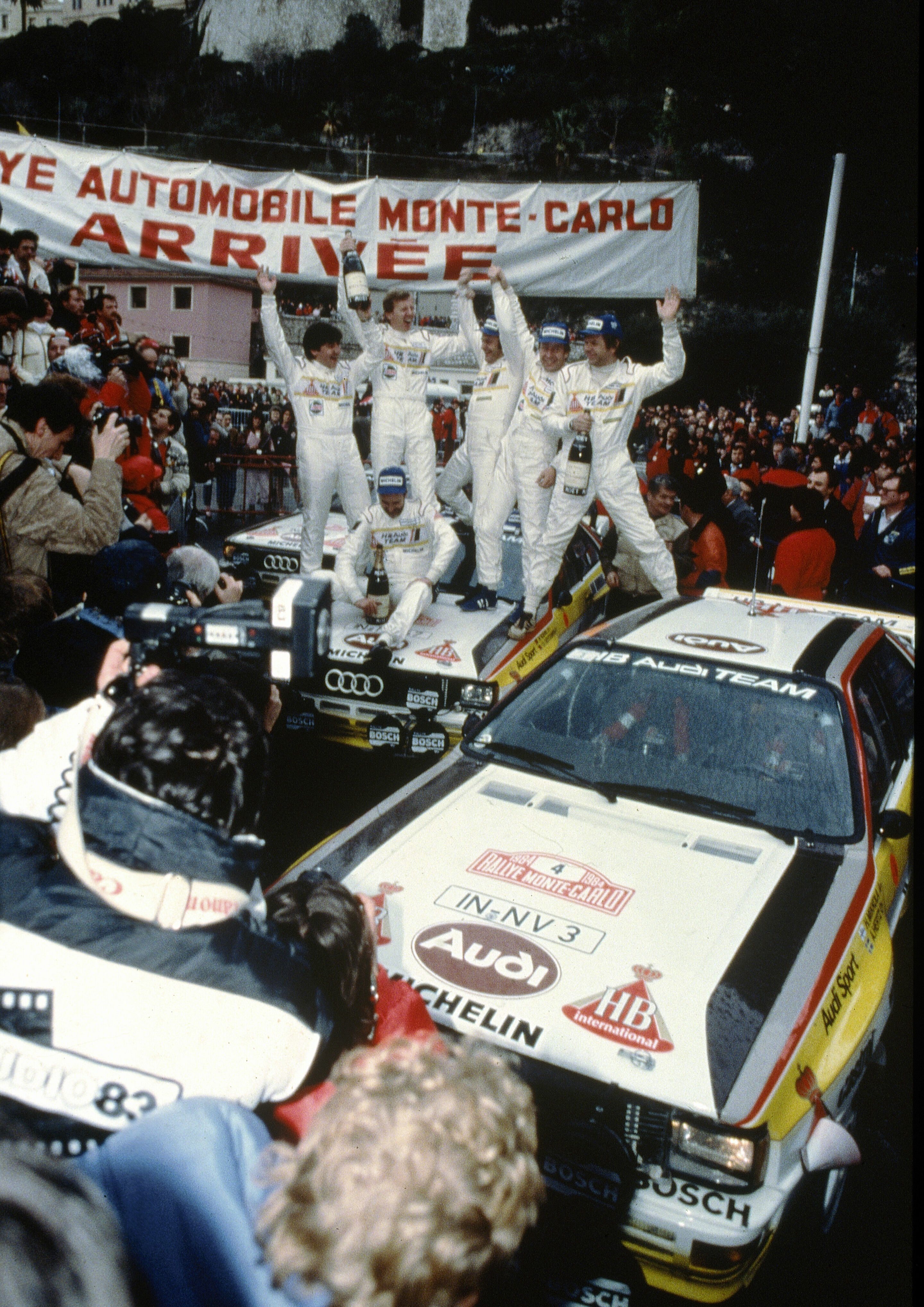 Audi Tradition's debut at the AvD-Histo-Monte
Audi Tradition's debut at the AvD-Histo-Monte
Walter Röhrl at the wheel of an Audi quattro which is entering for the first time Regularity rally from 7 to 11 February 2017, starting in Frankfurt
Double premiere for the start of the 2017 season: from 7 to 11 February, Audi Tradition will participate for the first time in the AvD-Histo-Monte, Germany's biggest classic car winter rally. The double world rally champion Walter Röhrl will be piloting an Audi quattro specially adapted for regularity rallies.
Walter Röhrl will turn seventy this year. The four-time Monte-Carlo rally champion takes the wheel once more, in the "mother of all rallies" over the toughest mountain passes, rather fittingly in an Audi quattro. "I'm delighted to take the old trials of the AvD-Histo-Monte just for fun and without any pressure. The Audi quattro is the perfect car for it, because you don't have to worry about not managing to climb a hill," Röhrl explained. Born in Regensburg, he joined Audi in 1984 after many different stations and successes in international rally sports. In his very first year as a works driver for Audi, he won his fourth victory at the "Monte" together with co-pilot Christian Geistdörfer, in an Audi Rally quattro A2. At the classic Histo-Monte winter rally, contestants have to cover 1,800 kilometres in unpredictable weather conditions. Audi Tradition does not want to subject the material of the valuable original racing cars to this challenge. Accordingly, Audi Tradition has built a car especially for such events: the bodywork is from an Audi Rally quattro A2 which Audi Sport used as a test car and later as an show car in the 1980s. Subsequently, the car was added to the historical collection of Audi Tradition. The body and the interior are of the technological standard of the 1980s. The vehicle's livery is also authentic. Instead of maintenance-intensive racing technology, the suspension and drive train are from the Audi quattro series-production model.
 After “Windschnittig” comes “Form vollendet”: A new special exhibition at the Audi museum mobile
After “Windschnittig” comes “Form vollendet”: A new special exhibition at the Audi museum mobile
Aerodynamics in automotive manufacturing from 1945 to the present day: from concept cars and record-breaking models to race cars and the Cd world champion, the Audi 100 Almost 30 exhibits feature in a special exhibition from July 25, 2024, to March 2, 2025
Audi wrote engineering history in 1982 with the Audi 100. With its drag coefficient of 0.30, the third-generation Audi 100 was the world’s most aerodynamically efficient production saloon at the time, making it an essential part of the new special exhibition "Form vollendet". The new special exhibition will be at the Audi museum mobile in Ingolstadt until March 2, 2025, where Audi Tradition will present aerodynamic concepts from 1945 to the present day.
The aerodynamics research that flourished before the Second World War and which was the subject of Audi Tradition’s “Windschnittig” exhibition (German for “streamlined”) that ran until the end of June received little attention after 1945. Europe’s automotive industry was busy getting back on its feet. During this period, pre-war developments were still in use and improved upon. It wasn’t until the rising cost of fuel during the 1973 oil crisis prompted a shift in thinking that automotive engineers began focusing on reducing fuel consumption. One of the dials used to achieve this was aerodynamic drag. In 1982, Audi made a splash with the Audi 100; its drag coefficient of 0.30 set a world record for production sedans, a value that would become the benchmark for years to come. The new Audi Tradition special exhibition “Form vollendet” (German for “form perfected”) showcases the Cd world champion Audi 100 alongside other models such as the NSU Ro 80, the Porsche 356, the Lamborghini Countach, and the Ducati Paso 950.
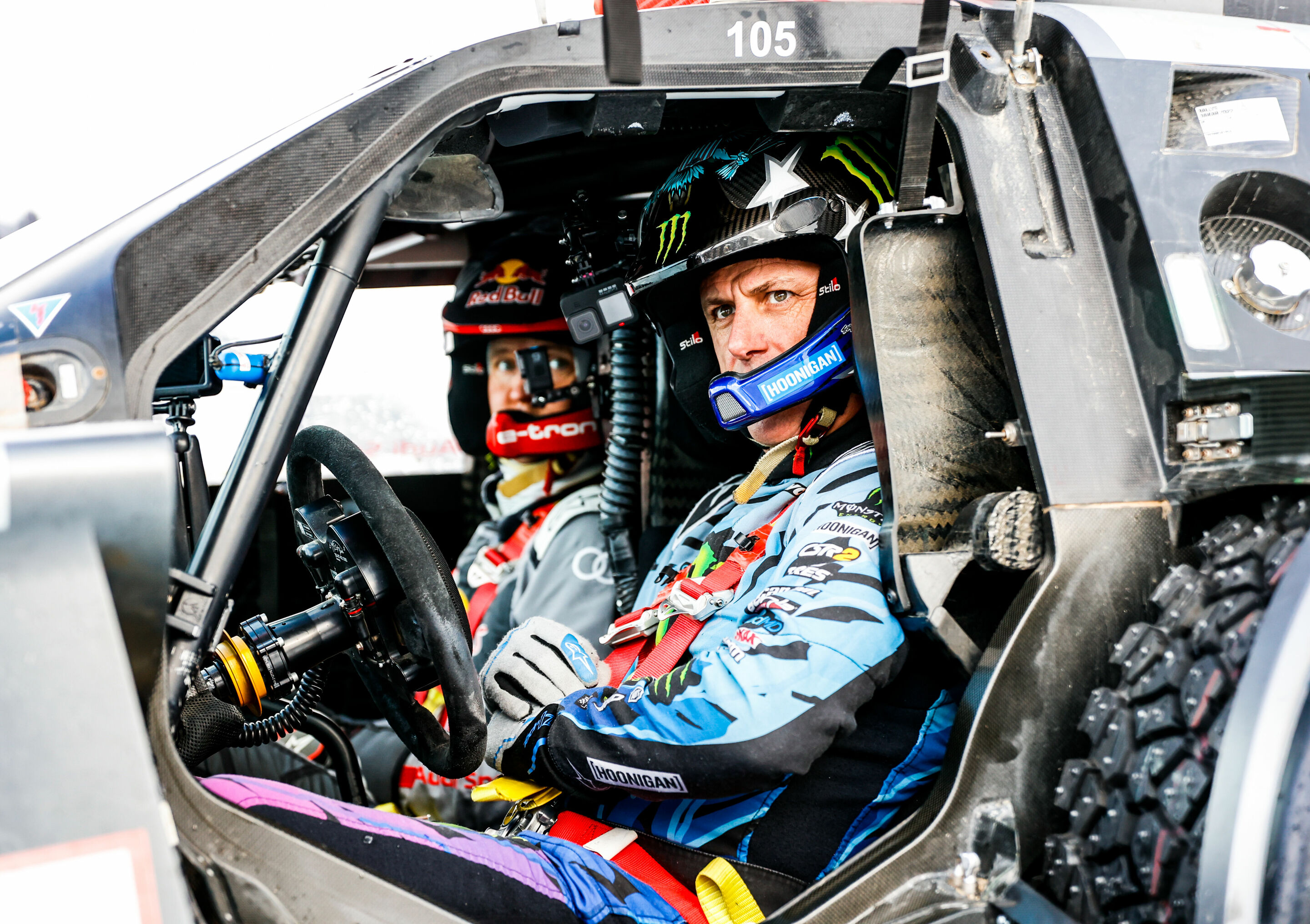 Ken Block thrilled with the Audi RS Q e-tron
Ken Block thrilled with the Audi RS Q e-tron
US drift artist drives Mattias Ekström’s Dakar car Historic treasures from Audi Tradition at the GP Ice Race Ken Block: “A phenomenal experience”
This was a car swap of a very special kind: with Mattias Ekström as the instructor in the co-driver’s seat, Ken Block tested the Audi RS Q e-tron with start number 224 on snow and ice. The outing during the GP Ice Race in Zell am See (Austria) was the spectacular prototype’s first appearance after its successful debut in the famous Dakar Rally.
The Audi RS Q e-tron, with which Audi clinched four stage victories in January, was just one of the stars on the icy course in Zell am See. Audi Tradition also brought along the Audi quattro A2 Group B rally car, which competed in the 1983 Rally Finland. In addition, a DKW F 91 and a DKW Hartmann Formula V caused quite a stir. For Ken Block, the weekend trip to Europe was like a visit to automotive paradise. “The laps in the Audi RS Q e-tron were a phenomenal experience – even though the car probably feels more comfortable in the desert than in the snow,” said Ken Block. “Thanks to Mattias Ekström, who patiently explained all the special features of his car to me. A few minutes behind the wheel was enough to understand the fascination of this car.” Mattias Ekström was impressed. “It only took three turns for Ken to get fully up to speed,” said the Swede, who, with ninth place, was the most successful Audi driver in the 2022 Dakar Rally. For Ekström, the event in Austria was also the perfect preparation for his participation in the prestigious “Race of Champions”, which was held in the north of Sweden last weekend. Ekström only had to admit defeat to the eventual winner Sébastien Loeb in the semifinals. In addition to testing the Audi RS Q e-tron, Ken Block also took a little trip down memory lane and drifted around the circuit in the Audi quattro A2.



